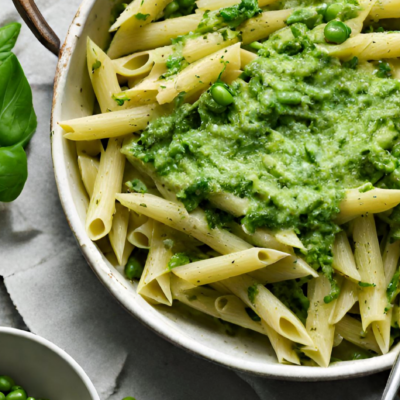The Ultimate Grab-’n’-Go Breakfast
By Joanne Chang
We offer so many mouthwatering buttery, sugary, fruity, chocolaty sweet breakfast treats in the morning that it can be almost impossible to choose just one. That is, unless you’re one of those people who need to start off the day with eggs or bacon or anything not sweet. For those customers, we’ve created the ultimate quick grab-’n’-go breakfast pizza using items we already have in-house: brioche dough, cheese, breakfast meats, and eggs. The dough, after an overnight rest in the refrigerator during which it develops flavor, is stretched and pulled like you would a pizza dough to make a flat round.
I’ve suggested a few of our best topping combinations here, but feel free to use whatever mixture of meats, cheeses, and vegetables you prefer. The egg on top is what makes these breakfast pizza shine. After creating a border of meats and vegetables around the edge of each brioche circle, you bake the pizzas about halfway through. Then you crack a whole egg in the middle of each one, blanket them with cheese, and bake until the eggs are just barely set. It’s a bit of a messy breakfast, but you won’t care once you taste how good it is.
Joanne Chang's Breakfast Pizzas
Ingredients
Breakfast Pizzas
- 1/2 batch Basic Brioche dough (recipe below)
- 1/2 cup/120 ml crème fraîche
- 12 slices thick-cut applewood-smoked bacon, cooked in the oven until barely crisp (see directions below)
- 1 cup/240 ml Caramelized Onions (recipe below)
- 8 large eggs
- 2 cups/225 g shredded part-skim mozzarella cheese
- Special equipment: two rimmed baking sheets, parchment paper
Caramelized Onions
- 2 tablespoons vegetable oil
- 4 medium or 3 large onions, halved and sliced as thinly as possible
- 1 1/2 tsp kosher salt
- 1 teaspoon freshly ground black pepper
- 2 teaspoons finely chopped fresh thyme
Basic Brioche
- 2 ¼ cups/315 g all-purpose flour
- 2 ¼ cups/340 g bread flour
- 3 ¼ tsp active dry yeast, or 1 oz/30 g fresh cake yeast
- 1⁄3 cup plus 1 tablespoon/80 g granulated sugar
- 1 tablespoon kosher salt
- 5 large eggs, plus 1 large egg for the egg wash if making loaves
- 1 cup plus 6 tablespoons/310 g unsalted butter, at room temperature, cut into 10 to 12 pieces
- Special equipment: stand mixer with dough hook attachment, two 9-by-5-in/23-by-12-cm loaf pans if making loaves, parchment paper if making loaves (optional)
Instructions
Servings: Makes 8 pizzas
1. Preheat the oven to 350°F/180°C, and place one rack in the center and one rack in the top third of the oven. Line the baking sheets with parchment paper.
2. Shape the brioche dough into a rectangle about 8 in/20 cm long, 4 in/10 cm wide, and 1 in/2.5 cm thick. Using a ruler and a knife, cut the rectangle into eight 2-in/5-cm squares by first dividing it in half horizontally and then dividing it vertically into strips 2 in/5 cm wide. Each square of dough should weigh about 3 ½ oz/100 g. Stretch each square into a circle about 5 in/12 cm in diameter as if you are making a small pizza. Stretch the inner part of the circle so that it is quite thin and shape the edge of the circle to create a rim. The center should be almost paper-thin, and the finished circle should look like you are making the crust for a mini deep-dish pizza. Place the brioche circle on one of the prepared baking sheets and repeat with the remaining dough squares, spacing them 2 to 3 in/5 to 7.5 cm apart and using both baking sheets.
3. Using the back of a spoon, spread 1 tbsp of the crème fraîche over the base of each brioche circle, spreading it evenly over the base but leaving the rim bare. Cut the bacon slices in half. For each pizza, press three half slices of bacon against the brioche rim to create a bacon wall. Divide the caramelized onions evenly among the pizzas, spooning and spreading the onions next to the bacon and leaving the center of the circle bare except for the crème fraîche.
4. Bake the pizzas, switching the baking sheets between the racks and rotating them back to front about halfway during baking, for about 15 minutes, or until the edges of the pizza start to turn light brown. Remove the baking sheets from the oven and carefully crack an egg into the center of each pizza. Sprinkle about 1⁄4 cup/30 g of the mozzarella on top of each pizza, covering both the egg and the exposed rim of brioche. Bake for another 8 to 10 minutes, again switching the baking sheets between the racks and rotating them back to front about halfway during baking, or until the cheese has melted, the edges of the egg are cooked but the yolk is still wiggly, and the edges of the pizza are golden brown. Remove from the oven. Let the pizzas cool for 8 to 10 minutes to allow the eggs to set up a bit before serving.
Ham, ricotta, and parmesan variation: Omit the bacon, onions, and mozzarella. Substitute 4 oz/115 g sliced ham, 1 cup/250 g fresh whole-milk ricotta cheese, and 1 cup/100 g freshly grated Parmesan cheese. Using about ½ oz/15 g ham per pizza, tear the ham into small pieces and press the pieces against the brioche rim to create a ham wall. Spread 2 tbsp of the ricotta along the edges of each pizza next to the ham, leaving the center of the brioche circle bare except for the crème fraîche. Bake as directed, substituting 2 tbsp of the grated Parmesan in place of the mozzarella sprinkled over the egg on each pizza. Let cool for 8 to 10 minutes before serving.
Tomato and cheddar: Omit the bacon, onions, and mozzarella. Substitute 2 ripe tomatoes, thinly sliced, and 8 oz/225 g Cheddar cheese, thinly sliced. Using 2 to 3 tomato slices per pizza, tear the slices into pieces and press the pieces against the edge of the brioche rim to create a tomato wall, leaving the center of the brioche circle bare except for the crème fraîche. Bake as directed, substituting 1 oz/30 g of the sliced Cheddar in place of the mozzarella sprinkled over the egg on each pizza. Let cool for 8 to 10 minutes before serving.
TO COOK THE BACON: Preheat the oven to 300°F/150°C, and place a rack in the center of the oven. Line the baking sheet with parchment paper or aluminum foil. Arrange the bacon slices in a single layer on the prepared sheet and bake for 22 to 26 minutes, or until the slices are half crispy and half still a little bendy. Remove the bacon from the oven and set aside.
Caramelized Onions
Servings: Makes about 2 cups/480 ml
In a large skillet, heat the vegetable oil over medium heat. Add the onions and cook, tossing and stirring occasionally, for 15 to 20 minutes, or until softened. Reduce the heat to low and continue cooking, stirring occasionally, for another 50 to 60 minutes, or until the onions are completely soft and caramelized. They will look dark brown and mushy. Remove from the heat and add the salt, pepper, and thyme and mix well to combine. The onions will keep in an airtight container in the fridge for up to 1 week.
Basic Brioche
Servings: Makes about 3¼ lb/1.5 kg, enough for 2 loaves
1. Using the stand mixer, combine the all-purpose flour, bread flour, yeast, sugar, salt, 5 eggs, and 1⁄2 cup/120 ml water and beat on low speed for 3 to 4 minutes, or until all of the ingredients have come together. Stop the mixer as needed to scrape the sides and bottom of the bowl to make sure all of the flour has been incorporated into the wet ingredients. Once the dough has come together, beat on low speed for 3 to 4 minutes longer. The dough will be stiff and seem quite dry.
2. Still on low speed, add the butter, one piece at a time, mixing after each addition until it disappears into the dough. After all of the butter has been added, continue mixing on low speed, stopping the mixer occasionally to scrape the sides and bottom of the bowl, for about 10 minutes. It is important to mix all of the butter thoroughly into the dough. If necessary, break up the dough with your hands to help incorporate the butter.
3. Once the butter has been completely incorporated, increase the mixer speed to medium and beat for another 15 minutes, or until the dough becomes sticky, soft, and somewhat shiny. It will take some time for it to come together; it will look very shaggy and questionable at the start but in time will turn smooth and silky. When that happens, increase the speed to medium-high and beat for about 1 minute. You should hear the dough make a slap-slap-slap sound as it hits the sides of the bowl. Test the dough by pulling at it; it should stretch a bit and have a little give. (If it seems wet and loose and more like a batter than a dough, add 2 to 3 tbsp flour and mix until it comes together.) If it breaks off into pieces when you pull at it, continue to mix on medium speed for another 2 to 3 minutes, or until it develops more strength and stretches when you grab it. It is ready when you can gather it all together and pick it up in one piece.
4. Transfer the dough to a large bowl or plastic container and cover it with plastic wrap, pressing the wrap directly onto the surface of the dough. Let the dough proof (that is, expand and develop flavor) in the refrigerator for at least 6 hours or up to overnight. (At this point the dough may be frozen in an airtight container for up to 1 week. Thaw overnight in the refrigerator before using.) If you are making a brioche treat, proceed as directed in the individual recipe.
5. Line the bottom and sides of the loaf pans with parchment paper, or butter the pans liberally.
6. Divide the dough in half, and press each half into about a 9-in/23-cm square. (The dough will feel like cold, clammy Play-Doh.) Facing the square, fold down the top one-third toward you, and then fold up the bottom one-third, as if folding a business letter. Press to join the three layers. Turn the folded dough over and place it, seam-side down, into one of the prepared pans. Repeat with the second piece of dough, placing it in the second prepared pan.
7. Cover the loaves lightly with plastic wrap and place in a warm (78° to 82°F/25° to 27°C) area to proof for 4 to 5 hours, or until the loaves have nearly doubled in size. They should have risen to the rim of the pan and have a rounded top. When you poke at the dough, it should feel soft, pillowy, and light, as if it were filled with air—because it is! The loaves have finished proofing and are filled with yeast air pockets. At this point, the texture of the loaves always reminds me a bit of how it feels to touch a water balloon.
8. Preheat the oven to 350°F/180°C, and place a rack in the center of the oven.
9. In a small bowl, whisk the remaining egg until blended. Gently brush the tops of the loaves with the beaten egg. Bake for 35 to 45 minutes, or until the tops and sides of the loaves are completely golden brown. Let cool in the pans on wire racks for 30 minutes, then turn the loaves out of the pans and serve warm or continue to cool on the racks. The bread can be stored tightly wrapped in plastic wrap at room temperature for up to 3 days (if it is older than 3 days, try toasting it) or in the freezer for up to 1 month.







